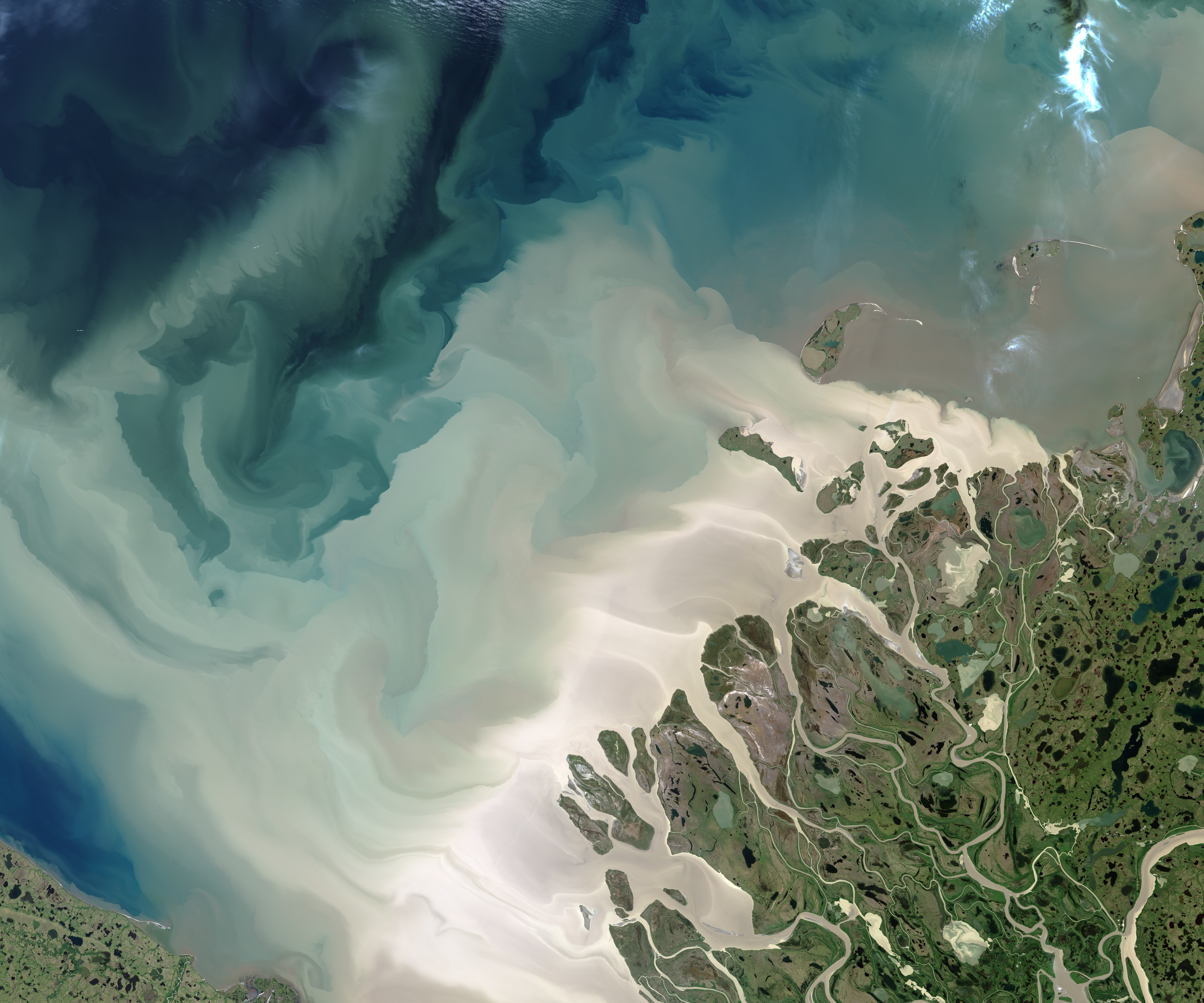Runoff from one of North America’s largest rivers is causing massive carbon dioxide emissions in the Arctic Ocean.
The world’s smallest ocean punches above its weight when it comes to influencing climate change. The cold waters of the Arctic are estimated to absorb up to 180 million tons of carbon each year, more than three times New York City’s annual emissions, making it one of the planet’s critical carbon sinks. But recent findings suggest that thawing permafrost and carbon-rich runoff from Canada’s Mackenzie River are causing parts of the Arctic Ocean to release more carbon dioxide (CO2) than they absorb.
The study, published earlier this year, explored how scientists used state-of-the-art computer models to study rivers such as the Mackenzie River, which flows into the Beaufort Sea region of the Arctic Ocean. Like many areas of the Arctic, the Mackenzie River and its delta have faced significantly warmer temperatures in all seasons in recent years, causing more melting and thawing of waterways and landscapes.
In this swampy corner of Canada’s Northwest Territories, the continent’s second-largest river system ends a thousand-mile journey that began near Alberta. Along the way, rivers act as conveyor belts for mineral nutrients as well as organic and inorganic matter. This material is discharged into the Beaufort Sea as a soup of dissolved carbon and sediment. Some carbon is eventually released or released into the atmosphere through natural processes.
Scientists believe the southeastern Beaufort Sea is a weak to moderate carbon dioxide sink, meaning it absorbs more greenhouse gases than it releases. But there is considerable uncertainty due to a lack of data from remote areas.
To fill this gap, the team used a global ocean biogeochemical model called ECCO-Darwin, developed by NASA’s Jet Propulsion Laboratory in Southern California and the Massachusetts Institute of Technology in Cambridge. The model incorporates nearly all available ocean observations collected over two decades through sea-based and satellite instruments (e.g., sea level observations from the Jason series altimeters, and seafloor pressure data from the GRACE and GRACE Follow-On missions). .
Scientists used the model to simulate the discharge of freshwater and the elements and compounds it carries, including carbon, nitrogen and silica, over nearly 20 years, from 2000 to 2019.
Researchers from France, the United States and Canada found that river emissions triggered such strong outgassing in the southeastern Beaufort Sea that they tipped the carbon balance, resulting in net emissions of 130,000 tons of carbon dioxide per year, roughly equivalent to 28,000 gasoline-powered cars. Annual vehicle emissions. The release of carbon dioxide into the atmosphere varies seasonally, and is more pronounced in the warmer months, when river flows are higher and there is less sea ice to cover and trap the gas.
climate change ground zero
For decades, scientists have studied the carbon cycle between the ocean and the atmosphere, a process known as the air-sea carbon dioxide flux. However, observations from the Arctic coastal margins are poorly documented, where topography, sea ice, and the long polar night pose challenges for long-term monitoring and experimentation.
“With our model, we are trying to explore the real contribution of coastal areas and rivers to the Arctic carbon cycle,” said lead author Clment Bertin, a scientist at the French Society for the Environment and Society of the Maritimes.
These insights are critical because about half of the Arctic Ocean consists of coastal waters, an intricate intersection of land and sea. While this study focuses on one specific corner of the Arctic Ocean, it can help tell the larger story of environmental changes occurring in the region.
Scientists say the Arctic has been warming at least three times faster than elsewhere on Earth since the 1970s, altering its waters and ecosystems. Some of these changes promote more carbon dioxide emissions in the region, while others cause more carbon dioxide to be absorbed.
For example, as Arctic land melts and more ice and snow melt, rivers flow more actively and wash more organic matter from permafrost and peatlands into the ocean. On the other hand, tiny phytoplankton floating near the ocean’s surface are increasingly taking advantage of shrinking sea ice to breed in newfound open water and sunlight. These plant-like sea creatures capture and absorb carbon dioxide from the atmosphere during the process of photosynthesis. The ECCO-Darwin model was used to study these blooms and the connection between Arctic ice and life.
Scientists are tracking these large and seemingly small changes in the Arctic and beyond as our ocean waters remain a critical buffer against climate change, absorbing up to 48% of the carbon produced by burning fossil fuels.
News Media Contact
King Andrew/Jane J. Lee
Jet Propulsion Laboratory, Pasadena, California
626-379-6874 / 818-354-0307
andrew.wang@jpl.nasa.gov / jane.j.lee@jpl.nasa.gov
Written by Sally Young
2023-185
#Arctic #warms #waters #spewing #carbon #NASA
Image Source : www.nasa.gov
